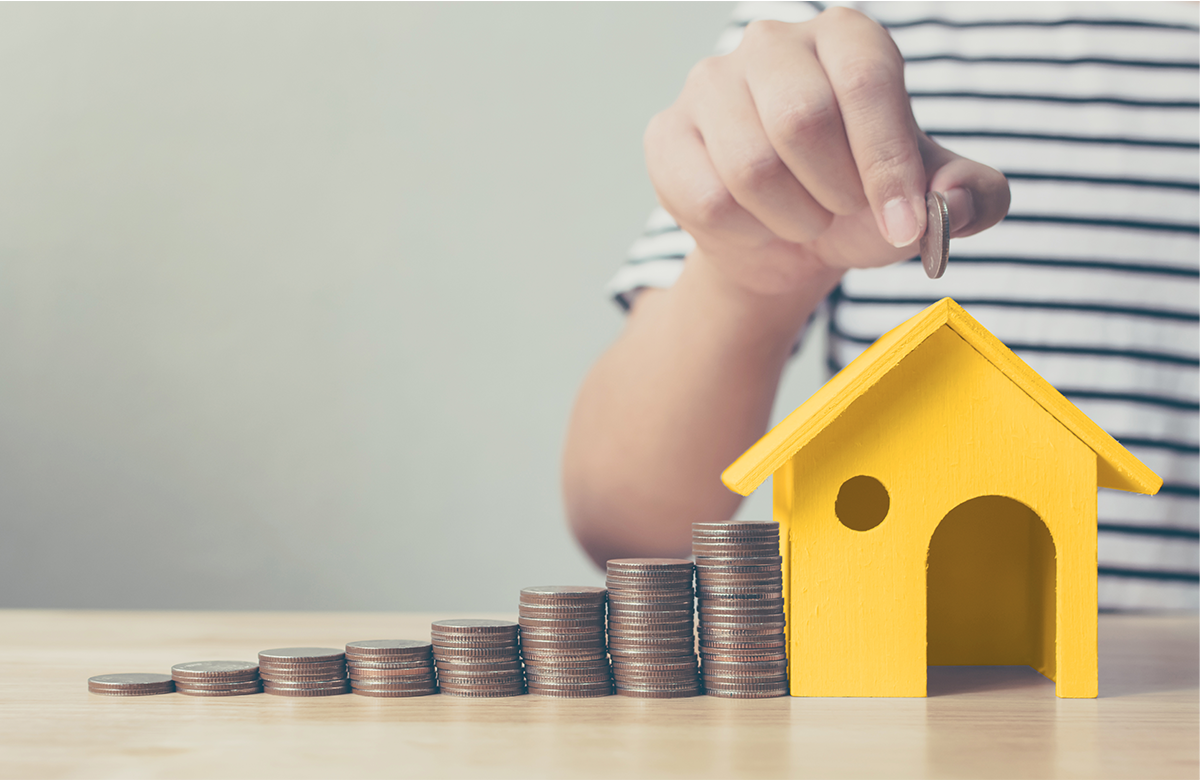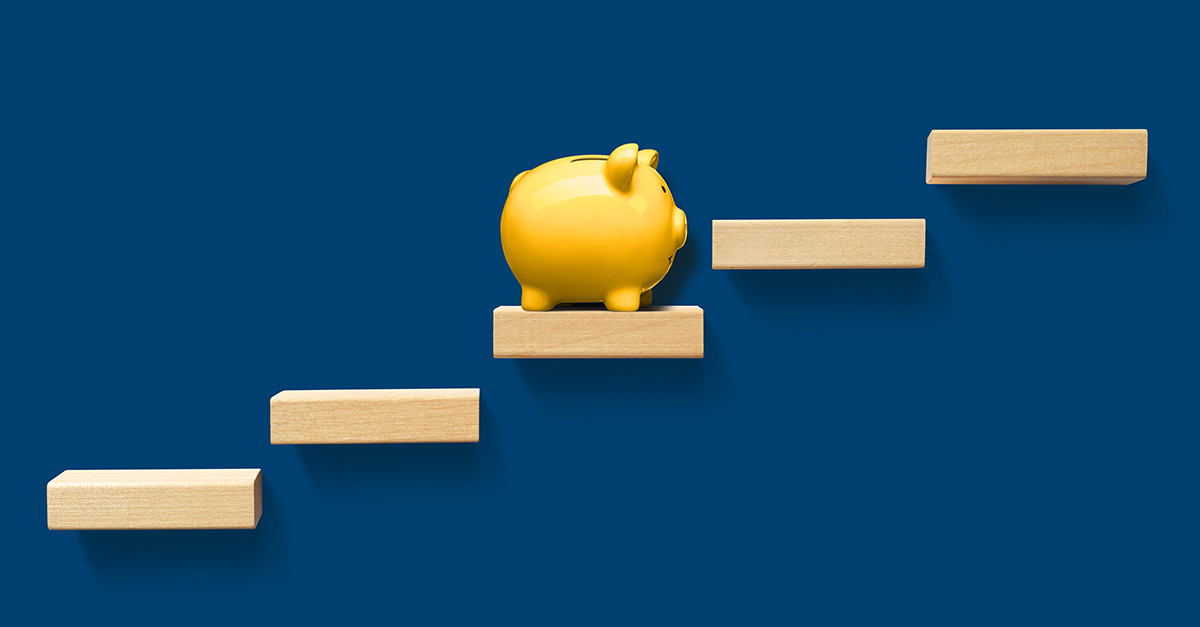My advice • April 15, 2021
modified on April 23, 2021
Take advantage of the HBP to buy your property!
Everything you need to know about this program.

This incentive, in the form of a participating mortgage, enables you to reduce your monthly mortgage payments, increase your down payment and reduce your upfront costs. Talk to your advisor about it!
Do you want to buy or build your first home? Why not use your RRSPs under the Home Buyers' Plan (HBP) to finance the down payment on the purchase price?1 Introduced in 1992, the HBP is a program that enables you to withdraw up to $35,000 from your RRSPs ($70,000 for a couple) to finance the purchase or construction of a qualifying new or used home to be used as your principal place of residence, without having to pay tax on the amount withdrawn.
Who can benefit from the HBP?
To take advantage of this program, you must be considered a first-time home buyer and be a resident of Canada at the time of your RRSP withdrawal, until the purchase or construction of the qualifying home is completed.2
In addition, you may be eligible for a non-refundable tax credit of up to $1,3763 as a first-time home buyer.
If you are a couple, some rules determine your eligibility. Visit the Canada Revenue Agency website to see if you qualify for the HBP.
Remember that the property for which you wish to use the "HBP" must be your principal residence and you must live there during the year following the beginning of the withdrawal. The funds you can use for the HBP must be deposited in your RRSP at least 90 days before the withdrawal.
Is it possible to receive the HBP more than once?
You can be considered a first-time home buyer again and receive the HBP if you or your current spouse or common-law partner have not owned a home for four years.4 For example, if you sold your previous home, in which you were living, in 2016, and paid off your first HBP in full, if applicable, you can use the HBP in 2021 to buy a new home.
If you were a previous home owner and experienced a marital or common-law relationship breakdown, you may be able to use the HBP to buy out your former spouse's or common-law partner's share, even if you don't qualify as a first-time homebuyer, as long as you have been living separately from your former spouse or common-law partner for at least 90 days as a result of the marriage or common-law relationship breakdown.5
How do you withdraw your RRSPs under the HBP?
To make an eligible withdrawal, simply decide on the amount, without exceeding the authorized limit, and complete the Canada Revenue Agency T1036 Home Buyers' Plan (HBP) Request to Withdraw Funds from an RRSP form, which you then give to your financial institution to complete the rest of the procedure.
What about repayment of the amounts withdrawn?
You must repay the full amount withdrawn over a maximum of 15 years, which begins on the second year following the withdrawal. Each year, you will have to repay 1/15 of the amount withdrawn. If you withdrew $30,000, you would have to repay $2,000 per year. Your HBP balance will then be reduced by the minimum annual repayment amount.6 Amounts not repaid in a year must be included on your tax return for that year.
Don’t have enough money to use the HBP?
You can also use RRSP financing7 if you don't have the money to use the HBP. For example, if you take out a $35,000 RRSP loan in January or February and contribute that amount to your RRSP by March 1 of the same year, you could generate substantial tax savings.8 When you want to take advantage of the HBP, 90 days after your RRSP contribution, simply withdraw the $35,000 and repay your loan. You can always use the tax savings you've earned.
Depending on your situation, the HBP could be a very advantageous option for homeownership. Feel free to talk to your advisor, who will be able to guide you through the process.
+ Legal Notices
- Please consult your accountant, tax specialist or another tax planner to validate the applicability and advantageous nature of this strategy.
- For more information on eligibility requirements, please consult the Canada Revenue Agency website.
- For 2021, this credit corresponds to a maximum amount of $626 at the federal level for Quebec residents, in addition to $750 at the provincial level, for a total of $1,376. The idea behind this non-refundable tax credit is to help you cover certain costs related to the acquisition of a home, such as notary fees, taxes, evaluation fees, etc. For more information, visit the Revenu Québec and Canada Revenue Agency websites.
- For more details regarding the four-year period, visit the Canada Revenue Agency website.
- Other conditions must be met. For more information, please visit the Canada Revenue Agency website.
- Some special refund situations may apply. For more details, please consult the Canada Revenue Agency website.
- Subject to credit approval. Interest charges apply. Please consult your accountant, tax specialist or another tax planner to validate the applicability and benefit of this strategy.
- Depending on your level of income and the amounts that were withheld at the source. For more information, talk to your advisor.
New investment accounts are offered by LBC Financial Services Inc. (LBCFS), which is a wholly owned subsidiary and a legal entity distinct from Laurentian Bank and Mackenzie Investments. Mutual funds and the financial planning service are offered by LBCFS. Mutual funds are part of the Laurentian Bank Group of Funds managed by Mackenzie Investments. A Laurentian Bank advisor is also a licensed LBCFS Mutual Fund Representative.
The articles on this website are for information purposes only. They do not create any legal or contractual obligation for Laurentian Bank and its subsidiaries.
These articles do not constitute financial, accounting, legal or tax-related advice and should not be used for such purposes. Laurentian Bank and its subsidiaries may not be held liable for any damage you may incur as part of such use. Please contact your advisor or any other independent professionals, who will advise you as needed.
The articles may contain hyperlinks leading to external sites that are not managed by LBC. LBC cannot be held liable for the content of such external sites or the damage that may result from their use.
Prior written consent from the Laurentian Bank of Canada is required for any reproduction, retransmission, publication or other use, in whole or in part, of the contents of this site.







